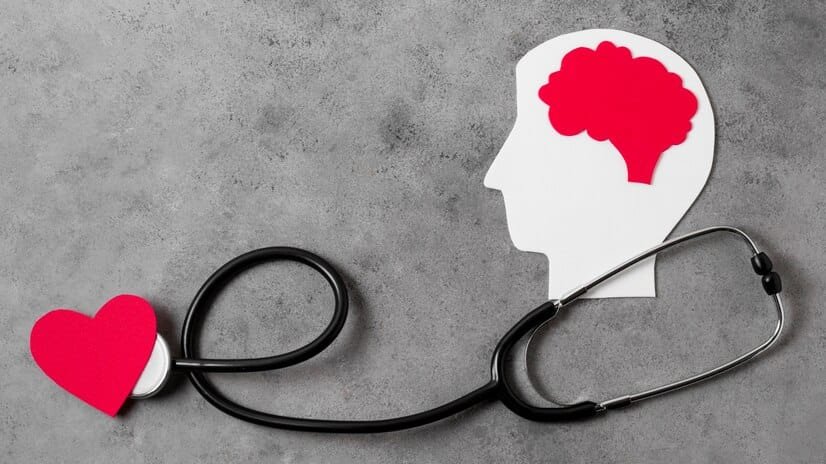Overview: Is Mindfulness the Missing Piece in Healthcare’s Mental Health Crisis?
A Lay of the Land: Need and Current Approaches
The world is facing a growing mental health crisis, affecting people, societies and economies everywhere. Traditional models of health care — which are critical and important — can be limited in their ability to address the complexities of mental well-being. These models often depend on pharmacological interventions and reactive treatment approaches that may overlook the power of proactive, preventative methods. Previous studies have recommended current MBSR and similar programs as a way to develop emotional regulation abilities, enhance stress resilience, and promote general psychophysiological well-being. Yet their integration into traditional healthcare systems is still inconsistent, and at times underutilized. They are hugely needed, particularly for a more in-depth investigation on how these evidence-based mindfulness interventions can be used to tackle some of the current challenges in the mental health landscape (Kabat-Zinn, 1990; Grossman et al., 2004).
The Importance of Mindfulness-Based Interventions
In this blog post, we explore how mindfulness may be the critical, if not fully appreciated, piece of the mental health crisis puzzle. The aim will be to objectively summarise the current literature into how existing data supports the use of mindful-based interventions, particular MBSR, in significantly reducing symptoms of concern (anxiety, depression and stress) both individually and within workplaces (Goyal et al., 2014). The conversation is an opportunity for mindfulness based stress reduction professionals who want to reach more people, and for business leaders who need ideas on how to implement strong menatl health programs in their organizations. By discussing what they have to offer in terms of specific mechanisms of action, practical implementation, and the challenges that lie ahead, we hope to inspire a more proactive and mindful approach to mental health care. It is more and more important to be proactive with preventative programs rather than reactive strategies. This highlights the need for organizations to consider and develop the appropriate options for MBSR (Ludwig & Kabat-Zinn, 2008).
Key Questions Explored:
- Why introduce mindfulness into healthcare systems?
- What are effective strategies for translating MBSR programs more broadly throughout diverse populations?
- Three best practices for business leaders implementing mindfulness as part of workplace mental health initiatives
Market Analysis of Mindfulness-Based Stress Reduction
This is driven by several factors, including a growing awareness of mental health across a range of demographics and a need for accessible solutions for managing stress and mental wellbeing. But with this growth comes challenges that require strategic planning for companies operating in this space.

I. Positive Trends
1.Expansion in Corporate Wellness Programs:
- Employment Health | 7 Key Driver: Increased awareness of the effects of employee stress on productivity and health-care expenses. Businesses are seeking proactive solutions.
- Impact: A massive B2B market opportunity for MBSR training and digital platforms. The opportunity can drive reliable, scalable revenue versus selling to individual consumers. Several companies, such as Headspace and Calm, are focusing on corporate solutions.
- Name: MBSR corporate retreats (Mindfulness Based Stress Reduction) Analyst Recommendation Focus on creating bespoke corporate MBSR initiatives for particular needs (high-stress job roles, corporate leadership training), and offer cost-benefit case studies through empirical outputs (i.e., reduced sick leave, productive collaborations).
2.A History of Digitalization and Accessibility
- Independent Variable: Penetration of smartphones and internet, and the need for accessible and on-demand solutions are increasing the usage of mindfulness apps and online MBSR courses.
- Impact: Expands market reach making MBSR attainable to diverse populations geographically and socioeconomically. Lowers barriers to entry, especially for thrifty shoppers. This is also a great example of companies like Insight Timer and Calm.
- Analyst recommendation: Invest in intuitive and usable platforms offering a variety of content (e.g., guided meditations, breathwork exercises, sleep stories) in many languages. Protect data privacy and security. Providing freemium to build the user base.
3.Scientific Validation and Mainstreaming:
- Root cause: Strong evidence supporting the effectiveness of MBSR in managing stress, anxiety, depression and pain has resulted in growing acceptance from the medical profession.
- Effect: Enhances credibility and consumer confidence. Allows for easy integration with organizational healthcare systems and insurance. Fewer physicians are prescribing it. And programs like MBSR at the University of Massachusetts Medical School have taken this even further.
- Research Analyst Recommendations: Be proactive about partnering with healthcare providers and researchers. Build trust through evidence-based content and outcomes. Get certifications wherever it’s possible.
II. Adverse Trends
1.The Big Idea: Market Saturation and Differentiation Challenges.
- Cause of It: There are low barriers to entry, low-cost meditation apps, and many online courses available which has led to a lot of competition.
- Implications: Struggle to recruit and retain users. Pressure to reduce prices. The absence of brand loyalty, and “app hopping” on the part of users seeking different features. This calls for some strategic investment to acquire new clients.
- Trading Recommendation: Focus on developing unique content/feature/user experience. Target audience niches etiquette. Shine a spotlight on community engagement and develop a strong brand identity. Explore subscription models for premium content.
2.Concerns Over Authenticity and Quality:
- Reason: The commodification of mindfulness may result in practices that are superficial or misguided being marketed as rightful MBSR.
- Adverse effect: When outsiders cannot tell if a platform or approach is authentic, it undermines trust in the field. Which can lead to a backlash against the practice itself. Some apps have been criticized for lacking in traditional principles of MBSR.
- ROEBRAN: Analyst Recommendation: MBSR teachers should make sure they are trained and certified. Collaborate with trusted organizations. This is the fourth step list where you said:Provide a clear theoretical and evidence base for all programs. Because you don’t have a consumer understanding of what MBSR actually is, as opposed to pop psychology practices.
3.Ethics of Data and Privacy
- Underlying Factor: The user data privacy issues of the data management of digital MBSR tools lead to scepticism and concern regarding the confidentiality of the information due to the sensitive nature of mental health information.
- Impact: Lack of consumer confidence, and possible legal consequences. Regulations around data handling become stricter Meditation apps include data that does not have a wide privacy proposal, although Apple has increased pressure for more protection cells.
- How to achieve it: Have a transparent data usage policy User Consent and Control Over Data Follow all relevant privacy regulations. Obviously, the customer does not want to hear this, so be brief and tell them what it is.
Conclusion
The market for MBSR is a double-edged sword. Successful companies will adapt to the fast evolving environment by fostering innovation, delivering quality, and upholding ethics. You will need to keep an eye out for changing trends and adjust to the needs of customers to create a sustainable and trust-based business model.
Mindfulness in Healthcare
Some hospitals have begun incorporating MBSR programs into their staff wellness programs. An example of this is seen in a large hospital network which offered an 8-week MBSR course to nurses in high-stress units. The program consisted of guided meditation, body scan, and mindful movement exercises to assist nurses in coping with the emotional demands of their roles. Data collected from the same doctors demonstrated significant improvement when reporting reduced levels of stress, decrease in burnout and an increase in focus and interaction with patients. Another example is the application of mindfulness for training healthcare administrators. Leaders are now better at making decisions under pressure, more communicative, and more collaborative as a team.
Technology Sector
A top software company instituted a company-wide “Mindful Monday.” This included short, guided mindfulness sessions that were available to all employees prior to the start of the work day, along with periodic in-person workshops on stress reduction techniques. The initiative received tremendous feedback, with internal surveys indicating fewer distracted employees, less anxiety before project deadlines, and greater job satisfaction overall. Mindfulness is another avenue another company is exploring to enrich the design process. By incorporating mindfulness exercises prior to and throughout brainstorming sessions, they found that employees come up with more creative and well-thought-out solutions.
Automotive Industry
A mindful assembly line — A mindful assembly line An automotive manufacturing plant. Much of the focus was on practices such as bringing awareness to the breath and to the present moment, as a way for employees to remain grounded through boring, repetitive tasks, and to help combat the dullness and exhaustion that manufacturing work often brings. The campaign reported a decrease in workplace accidents and mistakes. In another example, a car company uses mindfulness training for its customer service team to gain better listening and empathy skills in their interactions with customers, achieving higher scores in customer satisfaction.
Manufacturing
A large food manufacturing plant piloted a mindfulness program for shift supervisors to help them better manage their stress and use more positive leadership skills at work. The program included sessions on meditation and mindfulness coaching that emphasized practices for handling intense emotions and communication under duress. This led to more engaged employees, minimized conflicts, and an even smoother production environment. Additionally, several manufacturing companies are starting to implement short mindfulness activities before team meetings, assisting in centering the team and increasing collective hard work in problem-solving.
Organic Strategies
- More Features to Digital Platforms: Companies are focusing on increasing their digital offerings. This means implementing more customized guided meditation experiences using user data, as well as adding gamified aspects to printer user engagement. Apps like Calm have, for example, launched “Daily Calm” sessions that are based on the user’s previous activity and mood check-ins to promote regular practice of mindfulness.
- Tailoring Curricula: Besides general mindfulness teachings, a trend is the production of new target MBSR programs for more niche demographics. We see customized programs around stress reduction for healthcare workers or for parents of children with special needs. For example, Headspace has rolled out workplace stress programs, adding short, mindful breaks during the work day.
- Integration with Wearable Technology: Realizing an increasing trend among users, some companies also offer opportunities to integrate with wearable technology such as smartwatches to monitor physical responses during mindfulness practices. They are using heart rate variability and sleep patterns to deliver users with real-time feedback on their stress lever. Muse, for example, provides real-time feedback during meditation using EEG sensors to show brain activity, helping users better focus.
Inorganic Strategies
- Strategic Collaborations with Employers: One such transition is the establishment of collaborations between MBSR solution providers and large organizations. These types of partnerships are noted to be giving employees subsidized or free access to mindfulness apps as an employee benefit, fostering better mental health in the workplace while also expanding the apps’ user base. There are examples like Lyra Health partnering with many large employers to offer robust mental health benefits that incorporate mindfulness practices.
- Acquisitions for Tech Integration: Different providers have made acquisitions with the aim of either integrating news technologies into their platforms. That could involve simply acquiring companies that build AI-powered personalization tools or biofeedback technology for more realistic user experiences. We’ve witnessed (a lot of) transactions where health tech companies have acquired mindfulness apps to widen their offer in the ‘mental health’ segment.
- White-Labeling and Licensing: Firms Increase their Reach by White-Labeling or Licensing Content to Different Platforms or Organizations It enables providers to expand their geographical footprint without the costs associated with building their own infrastructure or heavy duty marketing. This approach opens the doors for a lot of these platforms to use your solution as part of their products, and for MBSR solution creators to license this intellectual property and generate revenue while scaling their programs.
-

Outlook & Summary: Mindfulness-Based Stress Reduction in Healthcare’s Future
Looking Ahead (5 to 10 Years Ahead)
In the next 5 to 10 years, I expect to see tremendous changes in the integration of Mindfulness-Based Stress Reduction (MBSR) and the larger mental healthcare landscape. It is expected that a few important trends will emerge:
- Mainstreaming: MBSR might shift from a specialized practice to a more conventional, evidence-based service in a range of health care environments, such as hospitals, medical practices, and corporate health and wellness initiatives (Kabat-Zinn, 1990). The integration behind this will be driven by the increasing evidence of its success in dealing with stress, anxiety and depression.
- Technological Integration: We can anticipate continued integration of meditation and mindfulness interventions with technology, with research on mobile apps, virtual reality programs, and telehealth platforms to enhance and deliver MBSR more widely. This will allow for international reach, thus reaching potentially underrepresented populations who fall in areas with limited traditional care.
- Tailored Approach: Over time, MBSR interventions will evolve into a highly personalized model that takes into account specific patient demographics and conditions. This will probably apply to Artificial Intelligence and data analysis to maximize treatment protocols.
- Preventive Mental Health Care: There may be an increased focus on preventative mental health care, where MBSR programs are offered to at-risk populations as a tool to promote mental wellbeing and resilience in the early stages of life.
What to Know: The Place of MBSR in the Mental Health Landscape
This article notes that MBSR isn’t pushover but rather a potent, data-supported tool for addressing the underlying reasons for many mental health issues. In contrast to pharmaceutical interventions that typically treat symptoms, MBSR directly addresses underlying patterns of thought and behavior while fostering resilience and self-awareness. It isn’t a substitute for conventional psychiatric care but intended to complement it, providing a potentially valuable adjunctive therapy. Thus, it is clear the potential of MBSR can not only serve as one aspect of a holistic, preventive and sustainable answer to mental health care, but also a complementary theory to many concepts of stress.
A Question for Reflection:
Due to MBSR’s ability to target some of the constituents of the core stress response, how, as leaders and practitioners, can we strategically integrate it into existing mental health care infrastructure to have the greatest patient impact?

